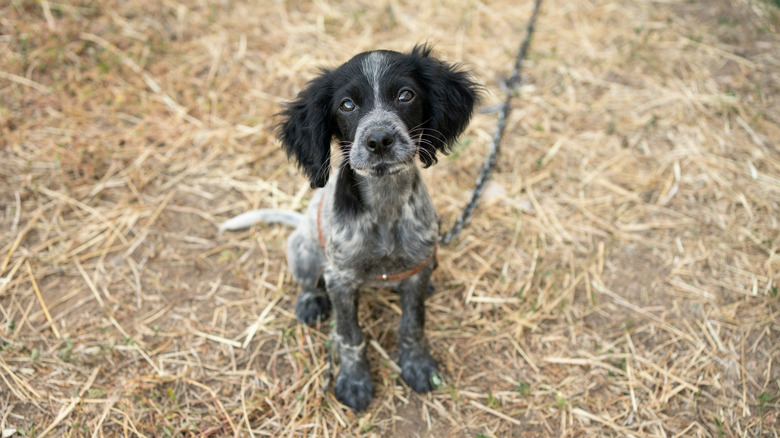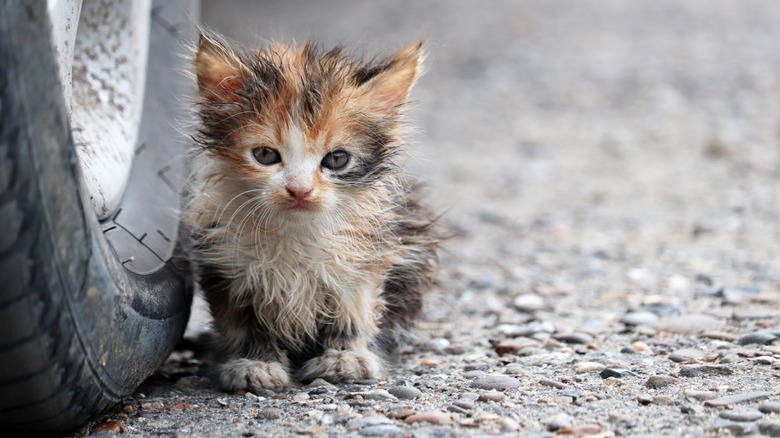Take These Steps Immediately If You Suspect A Pet Is A Victim Of Animal Cruelty
Animal lovers know how deeply pets rely on humans for safety, health, and happiness. That amount of dependence can make the betrayal of that connection rightfully anger-inducing. Yet, animal abuse can become a complicated matter for people; it could be a friend or family member you want to protect. In cases like hoarding animals, the person may think they are helping and are unaware of the damage they are causing.
While it could be hard to report someone you know, a pet's safety should always be prioritized. The first step in suspecting animal cruelty is to report it. If a pet is purposely harmed and there is a potential for death or serious injury, you can call 911; this does qualify as an emergency. For suspected cases of abuse, every state has different support systems in place from local humanitarian groups, the American Society for the Prevention of Cruelty to Animals (ASPCA), or animal control. If in doubt, contact the local police or animal shelter; they can point you in the proper direction to make a report.
For those who champion the safety of our furry friends, it may seem hard not to get directly involved. However, reporting animal abuse when you see it is essential; complicating the matter legally through intervention or putting oneself in danger by confronting someone won't help the pet. Even before reporting, though, people should be aware of what could constitute cruelty, as it is not always as cut and dry as one might expect.
Recognizing the signs of animal cruelty
The definition of animal abuse may vary from state to state, but it usually constitutes either gross physical or environmental neglect. The signs of an abused dog can be more than just striking or starving a pet. Ignoring basic health needs like grooming to the point where a dog is painfully matted or unable to walk due to long nails constitutes physical abuse. Not providing proper medical care, like treating wounds, allowing a collar to become so tight it embeds itself in the pet's neck, or letting pests or parasites thrive without treatment also all fall under abuse.
Environmental abuse can be more challenging to quantify. Cats can suffer in silence when you don't know their situation indoors. Seeing a dog outside that seems inadequately cared for can be hard to determine; "Maybe the owner is coming back right away." However, signs of prolonged outside exposure without proper shelter in extreme temperatures quantifies as cruelty. Any pet kept in a confined space for prolonged periods, where they can't move, surrounded by garbage or biological waste, is cause to make a report. Purposely denying access to food and water in any environment also constitutes abuse.
Animal hoarding can constitute both physical and environmental cruelty, as often the owner cannot properly care for a pet in a multitude of ways. In 2024, around 250,000 animals in the U.S. were reported to be the victims of hoarding, with the majority living in unsanitary conditions. Cruelty can take many forms, but for the sake of the animal, it never hurts to make a report; don't expect someone else to if you don't. Still, knowing what to expect after making a report can also help put someone's mind at ease who is unfamiliar with the process.
What to expect when reporting animal cruelty
A loving pet parent knows that dogs require physical and mental exercise to remain content, while cats need an enriching environment to feel safe. Those passionate about our furry friends also understand that denying pets the essentials can constitute cruelty. Even with this knowledge, it can be daunting to report abuse when one is unaware of the consequences. To assist in reporting, it is crucial to take as many notes, pictures, or videos (if possible) as you can. Not only will this reduce the stress of explaining the situation, but it also ensures you have a clear record of everything you have witnessed that can determine whether abuse occurred. Continue documenting after you have reported, including who you spoke to and what happened afterward.
You can make an anonymous report, but be prepared to defend a pet's safety if the issue goes to court; the more witnesses there are, the more likely charges will be pressed, and the pet will be freed. Here, detailed notes are also helpful. If you do not hear anything, it is okay to follow up with the authorities who investigated, and if you see more signs of abuse, it's fine to report it again. The most daunting aspect of reporting is that you may have to speak up in front of the abuser for the animal's sake, but choosing to say nothing can weigh heavily on the conscience of a passionate animal advocate. Animals depend on people; we owe it to them to help keep them safe, even when they are not our own.
If you suspect that a pet is being abused or neglected, you can find resources and support on the Humane Society of the United States website. If you see an animal in immediate danger, call 911.


